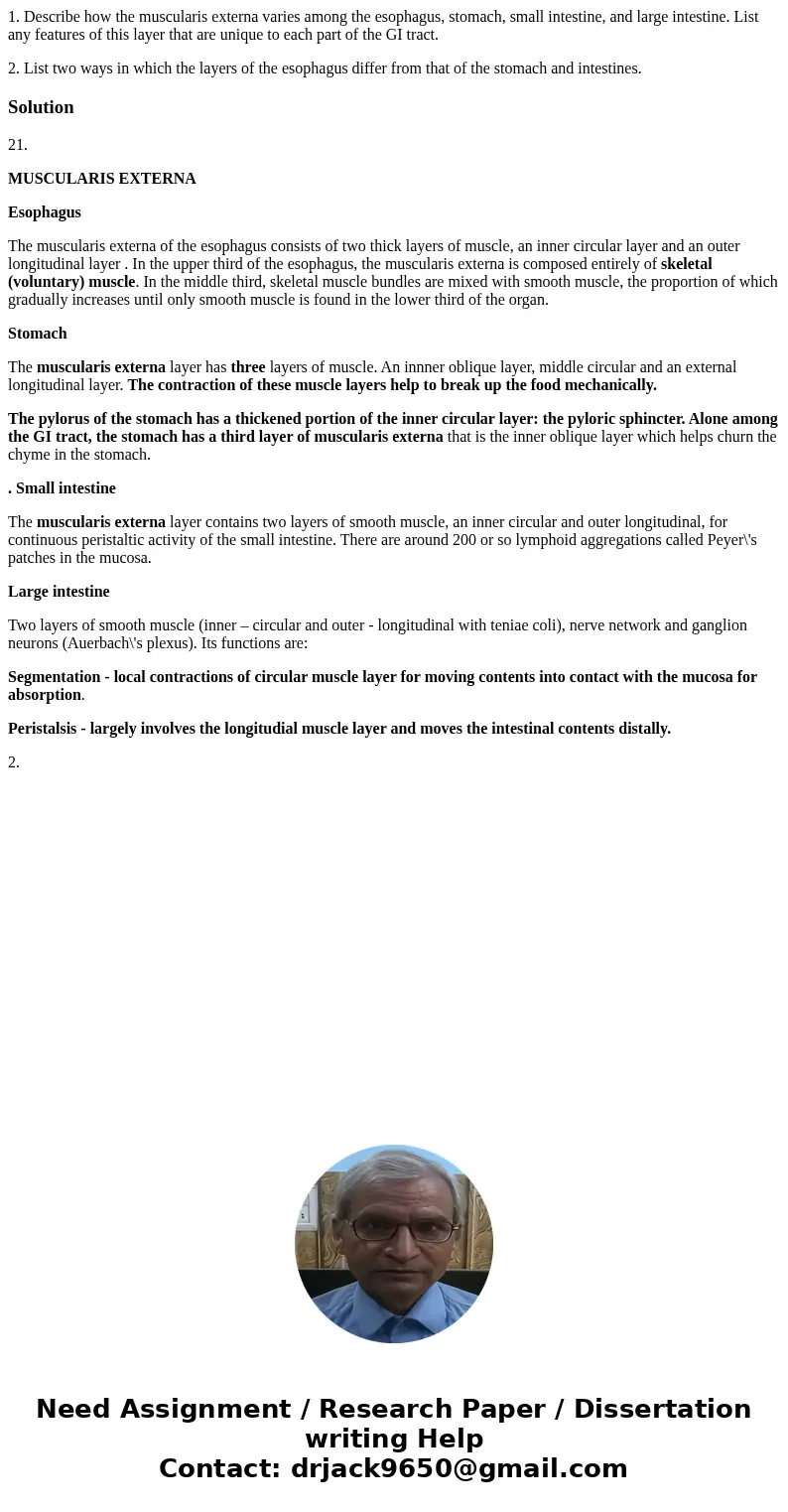1 Describe how the muscularis externa varies among the esoph
1. Describe how the muscularis externa varies among the esophagus, stomach, small intestine, and large intestine. List any features of this layer that are unique to each part of the GI tract.
2. List two ways in which the layers of the esophagus differ from that of the stomach and intestines.
Solution
21.
MUSCULARIS EXTERNA
Esophagus
The muscularis externa of the esophagus consists of two thick layers of muscle, an inner circular layer and an outer longitudinal layer . In the upper third of the esophagus, the muscularis externa is composed entirely of skeletal (voluntary) muscle. In the middle third, skeletal muscle bundles are mixed with smooth muscle, the proportion of which gradually increases until only smooth muscle is found in the lower third of the organ.
Stomach
The muscularis externa layer has three layers of muscle. An innner oblique layer, middle circular and an external longitudinal layer. The contraction of these muscle layers help to break up the food mechanically.
The pylorus of the stomach has a thickened portion of the inner circular layer: the pyloric sphincter. Alone among the GI tract, the stomach has a third layer of muscularis externa that is the inner oblique layer which helps churn the chyme in the stomach.
. Small intestine
The muscularis externa layer contains two layers of smooth muscle, an inner circular and outer longitudinal, for continuous peristaltic activity of the small intestine. There are around 200 or so lymphoid aggregations called Peyer\'s patches in the mucosa.
Large intestine
Two layers of smooth muscle (inner – circular and outer - longitudinal with teniae coli), nerve network and ganglion neurons (Auerbach\'s plexus). Its functions are:
Segmentation - local contractions of circular muscle layer for moving contents into contact with the mucosa for absorption.
Peristalsis - largely involves the longitudial muscle layer and moves the intestinal contents distally.
2.

 Homework Sourse
Homework Sourse